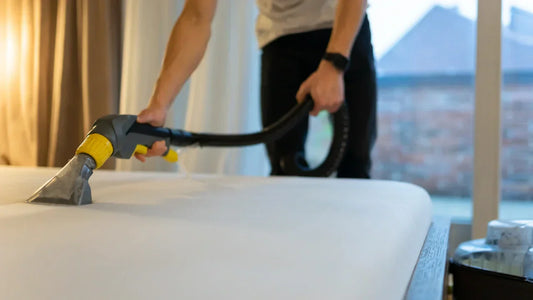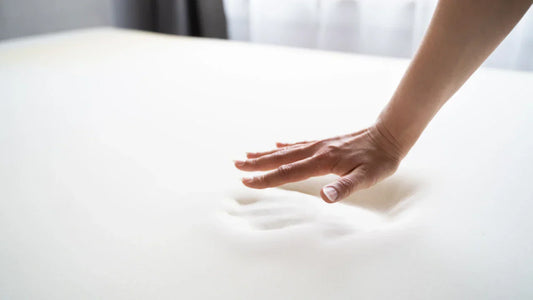According to The Sleep Foundation, under normal conditions, your mattress should be replaced every six to eight years. However, like all other things in life, if you take good care of your mattress, it’s likely to last longer.
Good maintenance of your mattress starts the moment you receive it, so start as you mean to go on.
Your New Mattress
When you receive your new mattress, you will no doubt be desperate to try it out. But, try to resist the temptation for a short time.
Once unwrapped and flat, you should let your new mattress sit and rest for five to six hours. This will rid the mattress of that ‘new’ smell and it will also allow any extra moisture to evaporate that the mattress might have been holding in storage.
Bed Hygiene

Now you have your new mattress ready to use, it’s time to set some hygiene rules for you and whoever you share your bed with. These should include:
- No food or drink allowed in bed
- No pets allowed in bed
- Removing make up and washing before getting into bed
- No sitting on the edge of the bed (to prevent sagging)
- No jumping on the bed!
Add Protection

To protect your mattress and lengthen its lifespan, we recommend fitting it with a mattress protector. A waterproof one would be especially useful to stop it developing mould inside should you spill any liquid on it.
Barrier fabrics for allergy sufferers are also available if needed.
Clean Bed Linen

To keep your odour and bacteria to a minimum on your mattress, stay up to date with your bed linen laundry. This means washing sheets and covers at a high temperature every week, or at the very least once a fortnight. This will help kill off any germs or dust mites – preventing them from getting into your mattress. Wash mattress protectors every couple of months too.
Breathing & Resting

Just like us, your mattress needs to rest and breathe. So, each morning, throw back the bed sheets or duvet and leave the bed to air for around 15-20 minutes to allow body moisture to evaporate.
Also, approximately every two weeks (or as you change your bed linen), you should strip your bed by removing the sheets and let it rest uncovered for a few hours before putting your new sheets on. This will allow any excess moisture to be released that was being trapped between the sheets.
Regular Turning

Your mattress should be turned around regularly to prevent sagging caused by constant pressure on one side. This should be approximately every three or four months, however a new mattress should be turned every week for the first three months. This will help upholstery fillings to settle down more evenly, too.
Cleaning & Stains

To maintain a clean and healthy mattress, you should vacuum it (as well as the bed base) from time to time to remove fluff and dust. Open windows while vacuuming to get rid of any dust in the air as you clean.
When tackling stains to the mattress, use a mild detergent with warm or cold water to sponge out. Never over soak a mattress or base.
Bye, Bye, Mattress

Follow professional advice and invest in a new mattress every six to eight years. It’s not only about hygiene. It’s also because over time your mattress sags and softens, meaning it will stop giving you the support you need. If you feel sore and tight when you wake up or you find sleeping in other beds more comfortable, it’s probably time to think about buying a new mattress.
Once you’ve bought yourself a new mattress, arrange to have the old one properly disposed of (research recycling options available near you). Don’t offer it to your children, family members or friends. If it’s no longer good enough for you, it’s not good enough for anyone else either!









